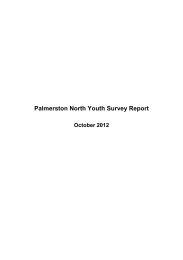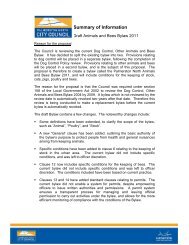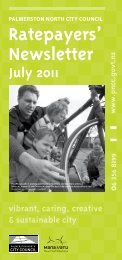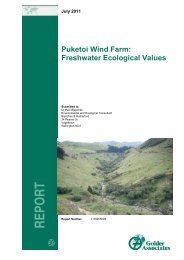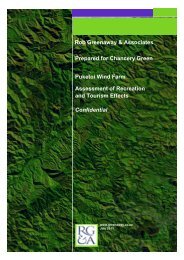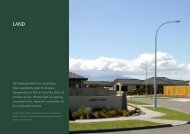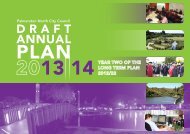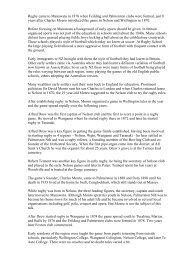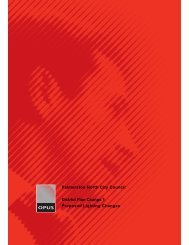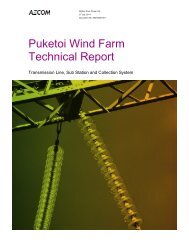Section 22: Natural Hazards - Palmerston North City Council
Section 22: Natural Hazards - Palmerston North City Council
Section 22: Natural Hazards - Palmerston North City Council
You also want an ePaper? Increase the reach of your titles
YUMPU automatically turns print PDFs into web optimized ePapers that Google loves.
<strong>Palmerston</strong> <strong>North</strong> <strong>City</strong> <strong>Council</strong> District Plan December 2000<strong>22</strong>. NATURAL HAZARDS<strong>22</strong>.1 Introduction<strong>Palmerston</strong> <strong>North</strong> <strong>City</strong> is subject to a number of hazards which can be broadly divided intothree categories, viz.• Flooding hazards associated with the Manawatu River, Mangaone and Kawau andvarious smaller streams. This also includes areas subject to poor drainage which leadsto surface ponding.• Seismic <strong>Hazards</strong>, associated with the <strong>City</strong>’s close proximity to the Wellington faultsystem, which tracks along the eastern side of the Tararua Ranges, and its proximity tonumerous other earthquake sources, such as: the Indo-Australian / Pacific Platesubduction zone, which lies beneath the eastern portion of the <strong>North</strong> Island; faultsystems within the Wanganui Basin, and; fold structures within Manawatu District. Thishazard includes earthquake induced ground shaking, surface fault rupture, amplificationof ground shaking and liquefaction of soft sediment areas.• Earth movements and instability which is associated with particular soil and slopeconditions predominantly in the Aokautere area and those areas in the foothills of theTararua Ranges.The management responsibilities of the <strong>Palmerston</strong> <strong>North</strong> <strong>City</strong> <strong>Council</strong> and the Manawatu-Wanganui Regional <strong>Council</strong> regarding the avoidance or mitigation of these natural hazards areidentified within Part 6 of the Regional Policy Statement. The respective responsibilitiesassigned to each of these authorities are as follows:(A)<strong>Palmerston</strong> <strong>North</strong> <strong>City</strong> <strong>Council</strong>• developing objectives, policies and rules for the control of the use of land except in bedsof rivers and adjacent land designated or zoned for river control, for the purpose ofavoiding, remedying or mitigating any adverse effects of flood hazards;• developing objectives, policies and rules for the control of the use of land for thepurpose of avoiding, remedying or mitigating any adverse effects of land subsidencefrom activities other than soil disturbance and vegetation clearance;• developing objectives, policies and rules for the control of the use of land for thepurpose of avoiding, remedying or mitigating any adverse effects of seismic hazards.(B)Manawatu-Wanganui Regional <strong>Council</strong>• developing objectives, policies and rules for the control of the use of land in thebeds of rivers and adjacent land designated or zoned for river control, for thepurpose of avoiding, remedying or mitigating any adverse effects of flood hazards;• giving notice where appropriate of designations for river control purposes; and• developing objectives, policies and rules for the control of the use of land for thepurpose of avoiding, remedying or mitigating any adverse effects of landsubsidence as the result of soil disturbance and vegetation clearance.Given the diverse nature of these natural hazards, it is not possible to adopt a single strategyto deal with them. Rather, particular strategies are associated with each individual hazard.<strong>22</strong>-3



